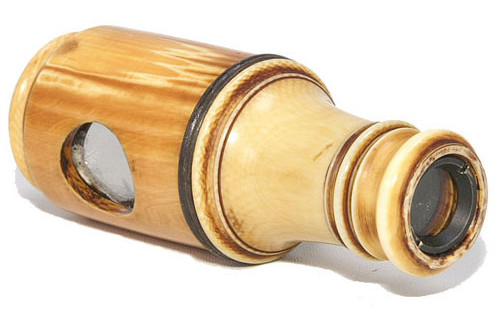
This is sneaky: Operagoers in the 18th century could spy on their neighbors using a “jealousy glass” — you’d appear to be watching the stage but a mirror would direct your view to the side, like a horizontal periscope. Marc Thomin, optician to the queen of France, wrote in 1749:
It is sufficient to turn this opening in the direction of whatever one wishes to observe and the curiosity is immediately satisfied. Its usefulness is confined to letting us see surreptitiously a person we seem not to be observing. This lorgnette may have been called a decorum glass because there is nothing more rude than to use an ordinary opera glass for looking at some one face to face.
Hanneke Grootenboer writes in Treasuring the Gaze, “Apparently, it was very convenient in allowing one to keep track of latecomers entering the opera without having to turn one’s head.”
(From J. William Rosenthal, From Spectacles and Other Vision Aids: A History and Guide to Collecting, 1996.)
